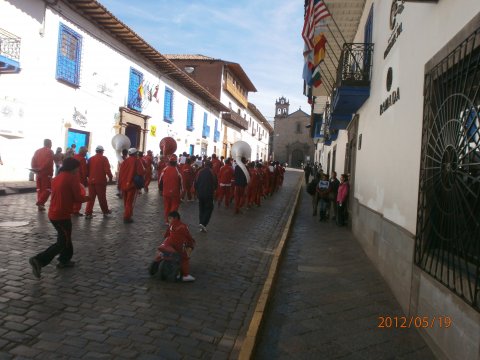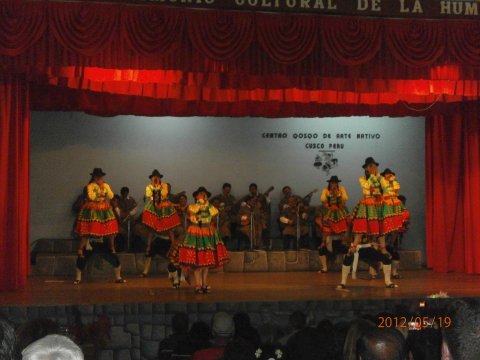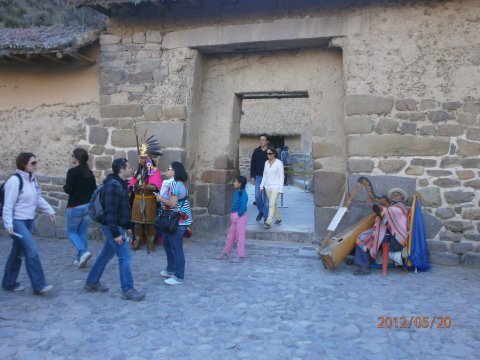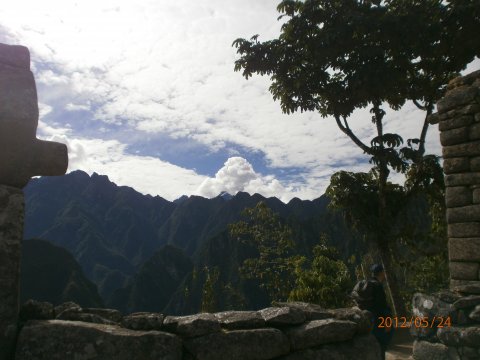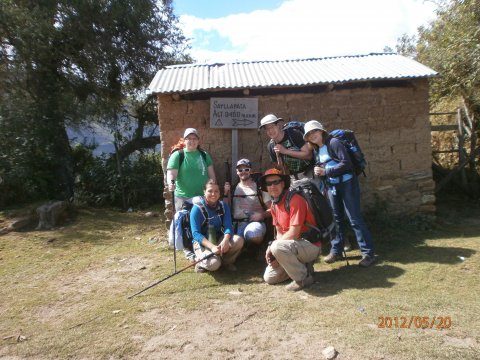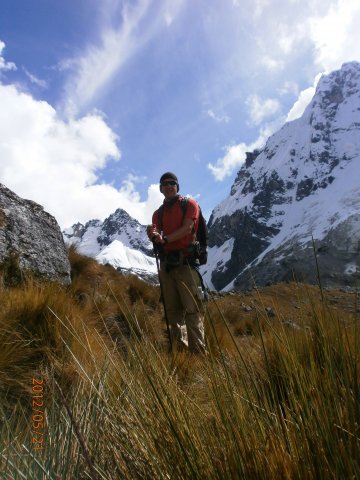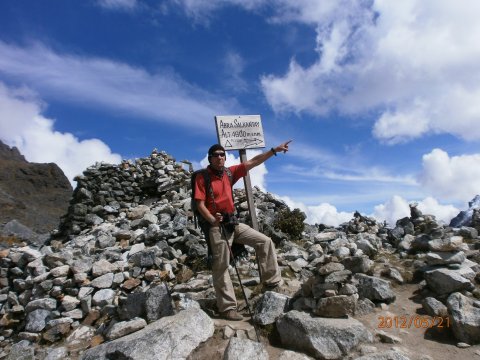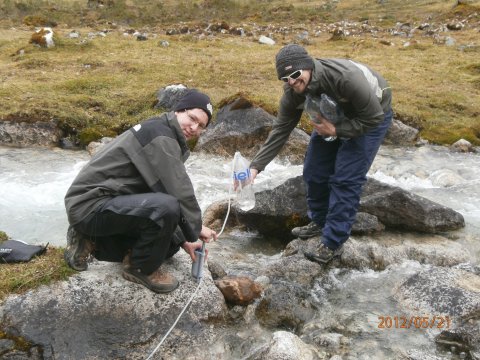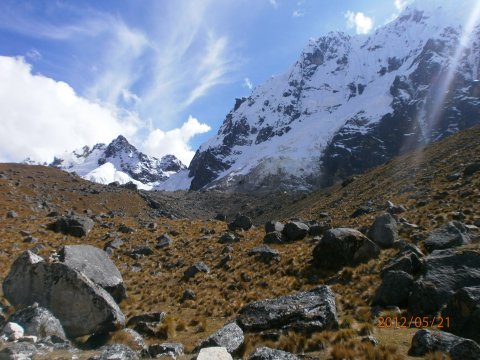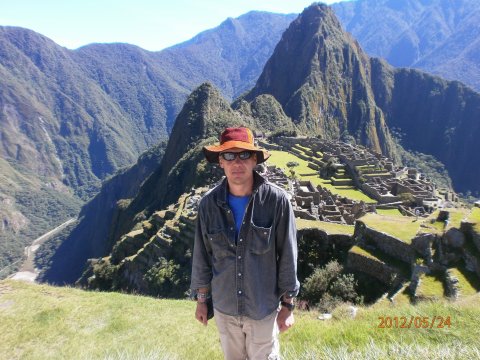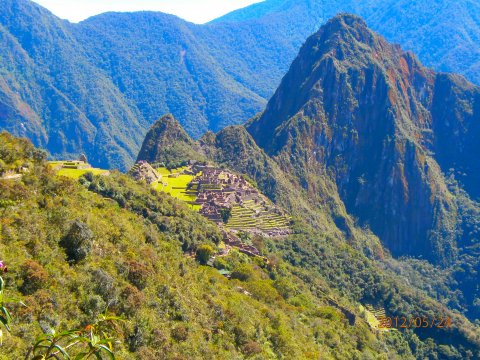Cusco is a beautiful city with an interesting history, but there are just too many tourists. Local people are trying to take advantage of a tourism which is very important for their economy and by any means they have a right to earn their living, but eventually you get very tired of all those people trying to sell you their products and inviting you to eat in their restaurants. The center is full of restaurants and travel agencies with very variable prices.
The area of Cusco and the sacred valley nearby are full of ruins of the temples from the times of Inkas. To visit them you ndeed to purchase a tourist ticket for 130 soles (50$) or pay 40 soles for a single entry. The tours that take you to the ruins aren’t that expensive and they are fastest way to do it. The guides were knowledgeable and the service was good. They even waited for me when I got lost in one of the ruins.
After two days of sightseeing it was time to do the Salkantay trek for five days. Inka trail is the best and the most popular trek, but it’s expensive and has to be booked at least three months in advance. Salkantay you can book just two days before the departure eventhough it’s getting very popular too. In five days you walk aslmost 100 kilometers in the varying landscapes from the mountains to jungle. The hardest climb is the Salkantay pass climbing from 3600m to 4600m.
We started in the first from Cusco at 5.30 a.m after waiting one hour for no reason. After two hours ride we started trekking 4 km from the actual starting point due to late start (????). I was put to a same group with 5 Canadians who knew each other. Some of them problems with climbing the steep hills. I thought it was told very clearly that this is not an easiest trek and there is lot of climbing and downhills. along the way. We stopped many times and waited for them patiently. Besides the guide we had two chefs and and one horseman with us taking care of our food and camping and cooking gear. The meals eaten in the nature were actually very good and we got some coffee too.
Th e first night we spent near Salkantay mountain in 3600m. It was windy and cold. Luckily our tents were under the roof and we had enough clothes and warm sleeping bags. Next morning we started the climb to Salkantay pass which was the highest point of the trek. The climb was tough, but I enjoyed it and the beautiful scenery. Nobody has ever managed to climb the actual mountain (6200m) though. In the afternoon we were descending quickly until the edge of the jungle in the rain. We walked more than 20 km that day in changing conditions. I almost lost my sense of humor in the rain waiting for the slowest of the group. The one of the girls was clever and hired the mule for first climb, but the rest of the day she had to walk also. The rainy night we spent camping in the backyard of one local family. Everybody was tired after long day and hit the sack after dinner.
The third day we walked just in the morning and enjoyed the fresh jungle after the rain. In the afternoon we camped on the campsite near one village known of its thermal baths. All the natural pools were full of people. One of them was actually very hot. One German decided to ruin his trek by diving to a pool with one meter of water. Luckily the first aid clinic was near and he got six stiches to his leg, but he had to finish the trek by car. In the evening we had campfire with disco lights and loud music, a very natural experience indeed. I went to my tent quite early after drinking few beers, but I guess that some of the trekkers partied until morning.
The fourth day was the most boring. We walked on the road and along the railroad to Aquas Calientes, one of the most touristic places on this planet. A small village is full of hotels, restaurants, massage places and people offering these services on the streets. Without the presence of the famous mountain nobody would know this village. After the four days of walking it was nice to have a hot shower in the hostel and eat in the restaurant.
The last day we started by climbing the steep stairs to the entrance of Macchu Pichu. For me it took one hour, but for the slowest of the group half an hour more. The line was already long when they opened gates at 6 a.m. We could finally start our guided tour after 7. Nevertheless the ruins were quite impressive and it was interesting to listen to the history of the Inka empire and building of the city. Suddenly the sky cleared up and we had beautiful views over the ruins and the surrounding mountains. I couldn’t get the permission to climb Huayna Pichu mountain before the trek in Cusco, because 400 tickets were already sold for that day. It would have been a steep climb for one hour rewarded by beautiful views over the ruins. I climbed the sungate, end of the Inka trail, instead. After spending six hours on the ruins I decided leave in the early afternoon. It would have been possible to take the bus down to the village for 9 dollars, but I decided to enjoy the steep stairs once more. I was pretty tired when I finally got down, but there was still many hours to spend before the departure of the train. After sending the postcards, eating a bad meal, drinking few beers and enjoying the hostel’s coach in the candle light, the electricity went off for few hours, we could finally catch our train leaving at 9.30 p.m. All the transportation to Macchu Pichu is very expensive, but luckily all the tickets were included in the price of the trek. We were picked up by the minivan of the agency from the last station. Finally we arrived in Cusco after midnight. The trek wasn’t perfect, but it was definitely worth the money and good way to visit one of the seventh wonders of the world.

